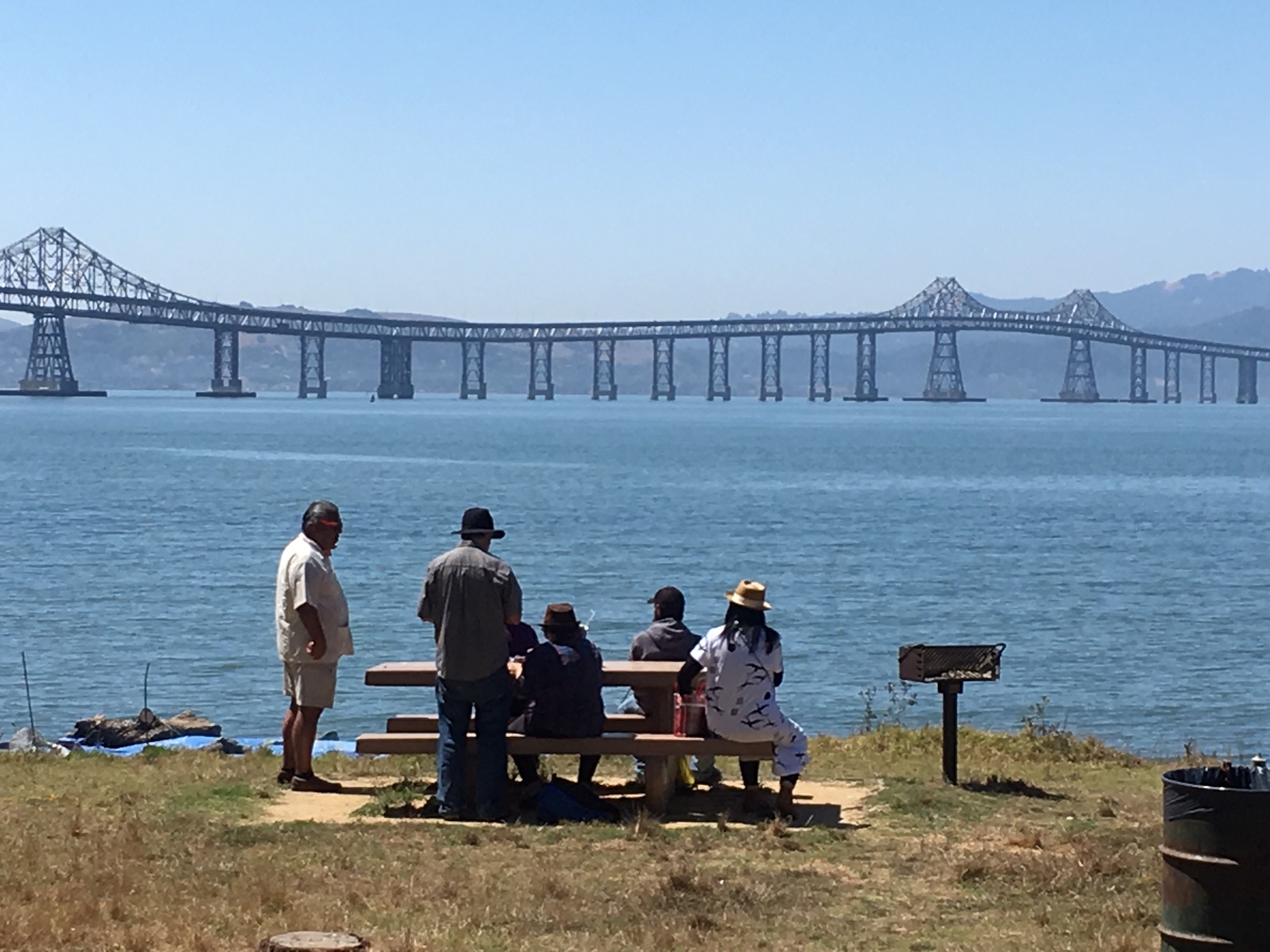
Today’s North Richmond shoreline looks much different from its historic blend of baylands, mudflats, and wet meadows. A lot of the land has been filled, or else fragmented by transit and industry. The region’s three creeks — the Rheem, the San Pablo, and the Wildcat are mostly behind levees for flood control (the San Pablo and Wildcat Creek levees were raised in late 2017).
The shoreline, and the 500 meters inland where the optimal marsh-upland transition zone could exist is bounded on one end by Chevron’s Richmond Refinery and by an Amazon distribution center and other new, massive warehouses at the other end. The middle of this zone is cut, not by long tidal plains or gentle sloping uplands, but by a high speed four-lane parkway that shortcuts between the 80 and the 580. Where the parkway jogs inland, the landward edge of the shoreline is defined by the rail line carrying regularly scheduled Amtrak trains along the Capitol Corridor route and freight trains loaded with imported cars from further down the line at the Port of Richmond.
Existing inside these narrow confines are a landfill, a wastewater treatment plant, Point Pinole Regional Shoreline, a shooting range, a flea market, and storage yards. There are also neighborhoods, such as North Richmond, and Shields-Reid, and Parchester Village.
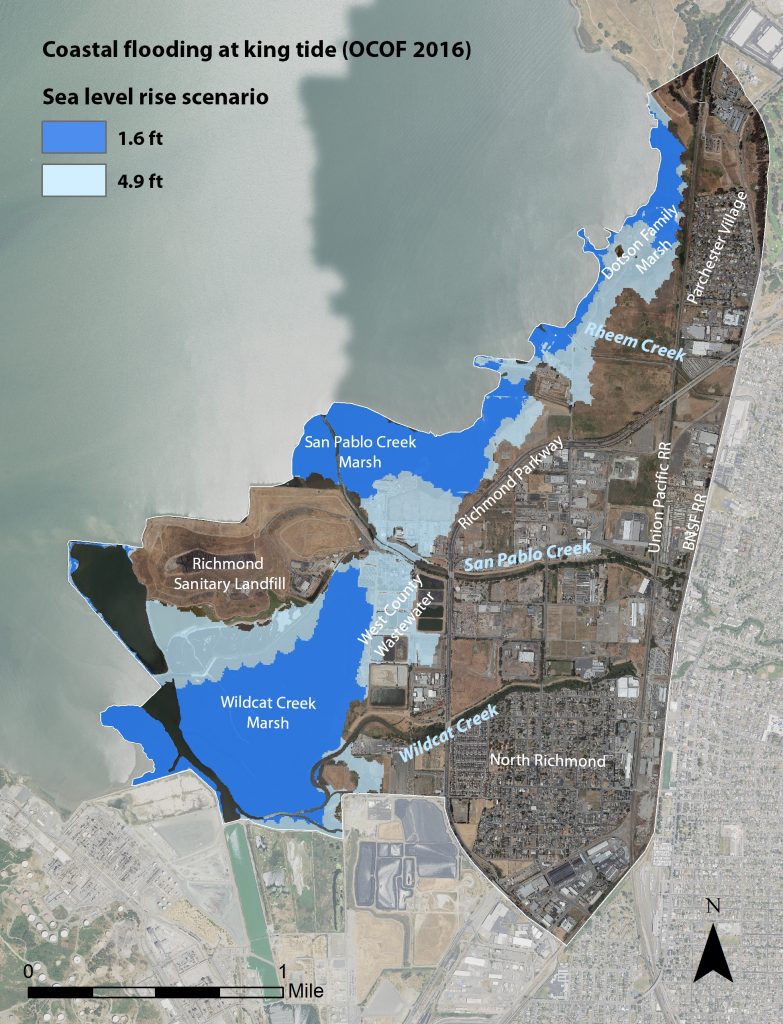
But this story is not so much about place names and landmarks or what, exactly, the hard to define transition zone is. This story is about the people of North Richmond. It’s about what a community ringed by the consequences of industry wants its nearby shoreline to look like in the future.
Over the past year, a project led by the San Francisco Estuary Partnership collaborated with the San Francisco Estuary Institute and Richmond-based organization The Watershed Project to get community input into a North Richmond Shoreline Vision. The idea was to incorporate and organize ideas from residents and community-based organizations, community social equity leaders, the scientific and conservation communities, as well as from property owners and land managers (such as the landfill and wastewater treatment plant).
“We have seen a lot of shoreline projects proceed without thinking about the people who live there, so we were trying to not do that in this process,” says Heidi Nutters, an environmental planner with the Partnership and one of the leads on the vision project along with Joshua Bradt.
In North Richmond there are few ball fields and no large grocery stores, but there are brownfields and junkyards. The 2010 Census data shows that the shoreline study area is made up mostly of people identifying as African-American, Latino, or Pacific Islander. According to statewide data, the North Richmond area has a higher than average poverty rate, and is exposed to a disproportionate amount of chemical toxins and emissions.
So, put simply, the worrying about forage and cover for the salt marsh harvest mouse or thinking about flooding that may happen a couple of decades from now ranks lower than more immediate needs. And that’s exactly the challenge that the North Richmond Shoreline Vision wanted to start to address. “How can we draw attention to the importance of transition zones while addressing critical equity concerns in communities,” asks Nutters. “How can we marry resource protection with environmental justice?”
Making this leap is important to the Estuary Partnership and other entities like flood control districts and science and engineering organizations who sometimes get lost in the technical details of preparing for rising sea levels. The Partnership’s work studying the North Richmond shoreline may be useful to local governments and planners but not necessairly something a family living near the edge of the Bay in Richmond would find enlightening. But SFEP and others are awakening to the fact that sustainable and resilient design of landscapes and natural systems needs to be inclusive of people, and in particular to voices that are traditionally left out of the process.

But gaining meaningful insights about what people actually want, and then figuring out how compatible those ideas are with what scientists, engineers, planners, and policy makers say should happen, is not an easy task. What’s needed are organizers and advocates that are able to navigate neighborhood politics. “We’ve been involved in the North Richmond watersheds for 15 years, and community based restoration projects for 20, so that’s why they called us to participate,” says Juliana Gonzalez, the executive director of the Watershed Project.
Gonzalez outlines the Watershed Project’s two-step approach. First they talked to all of the known stakeholders to capture their ideas about the shoreline (stakeholders like the East Bay Regional Park Service or Contra Costa County already have long-term plans). To get the information so far left out of these plans, Watershed Project staff developed what Gonzalez calls a “recreational survey,” meaning it wasn’t designed to explain the various issues facing the shoreline’s transition zones, or threat of sea level rise. Instead the survey was intended to figure out what residents wanted. “We went to where people were gathering, like PTA meetings, or neighborhood councils, or church groups,” Gonzalez says. “We reached 300 residents and asked them for their opinion.”

What the survey revealed is that the residents of the North Richmond’s neighborhoods feel removed from the shoreline. Despite their proximity, access by way of good pedestrian or bike trails is lacking. Crossing rail tracks, or the parkway (which includes an underpass that gets filled with mud or stagnant water) is enough of a barrier to prevent frequent visits. Residents also want to have more reason to visit the shoreline, like to check out an environmental education or natural history interpretation center.
In some instances, these kinds of opportunities and projects align nicely with stakeholder visions of the shoreline. East Bay Parks, for instance, just opened the restored Dotson Family Marsh, with another 1.5 miles of bike trail and future Bay Trail. The new trail effectively connects Parchester Village with the 2,500 acre Point Pinole Regional Shoreline. Other projects, still in the planning phase, also overlap with what the community wants. Gonzalez points to the West County Wastewater Treatment Plant’s proposal for a horizontal levee as an example. Horizontal, versus conventional vertical rip-rapped levees, have broader shoulders and can provide space for native plants, habitats and other amenties. Communities around the Bay are beginning to embrace this gently sloping levee concept as more adaptable to rising seas. “It’s not so much that people want a horizontal levee,” she says, “as much as it is the recreational opportunities and access that it will bring.”
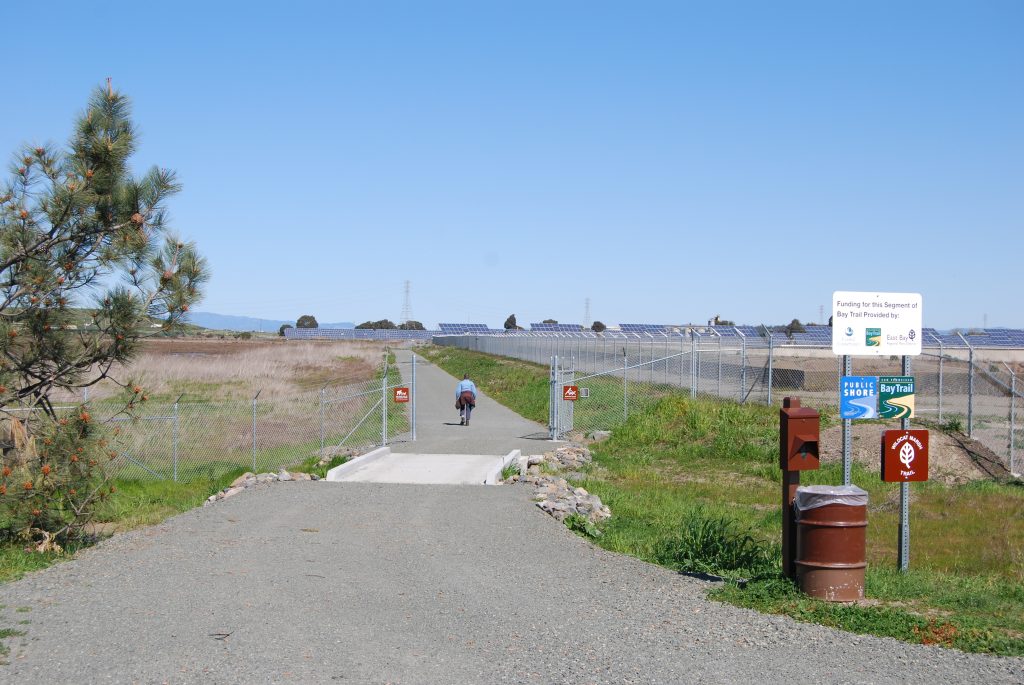
One of the outcomes of the North Richmond Shoreline Vision project is that several areas of prime upland transition zone were identified for further study. These areas present opportunities for restoration work in the future. But what, exactly, future projects along the North Richmond Shoreline will look like is still unclear.
While increased access and recreational opportunities are things that all parties seem to agree on, other priorities don’t always align neatly with how conservationists and environmental planners traditionally understand restoration work. Besides access and recreation, residents of North Richmond are also concerned about jobs, development, gentrification, and the ongoing battle against air and water pollution.
“When people have very immediate concerns about food and housing, it’s hard to think about long-term impacts like sea level rise,” says Nathan Bickart, who works on the Basins of Relations program, an education project that is part of the Richmond-based Urban Tilth. “So when you give people an open-ended question like: ‘what do you want to see on the shoreline,’ it creates an interesting dynamic.The people living there are saying we need affordable housing, and the science is saying that we need transition zones. So what happens when the community need doesn’t map one-to-one to what a scientist would devise in the absence of those needs?”
All involved with the North Richmond Shoreline Vision agree that it is just the beginning of what needs to be an ongoing conversation. “We have to learn to talk to each other,” says Jeremy Lowe. “Scientists are not the best people to do that, we all have to learn some common vocabulary and understand other perspectives. In an urbanized estuary, we may not be able to have a perfect marsh. What we need is a 21st-century marsh that can exist alongside people. We need to figure out what that looks like.”
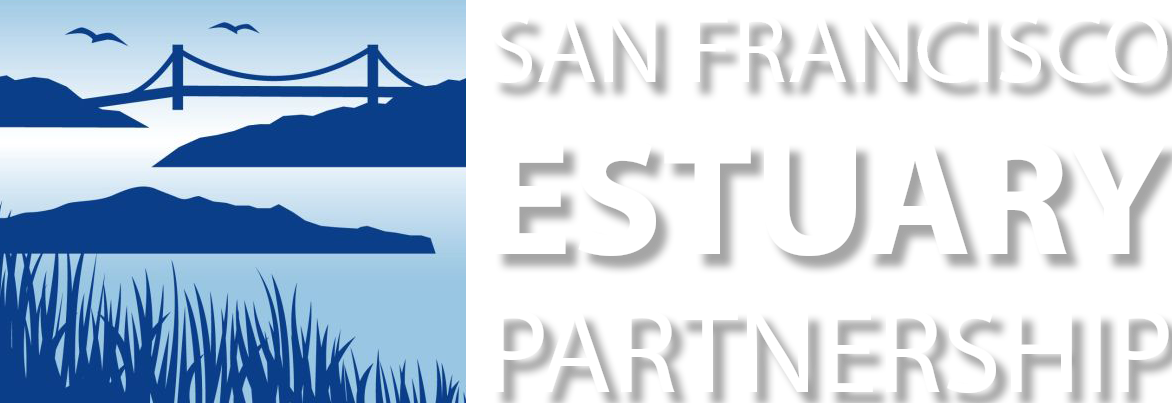



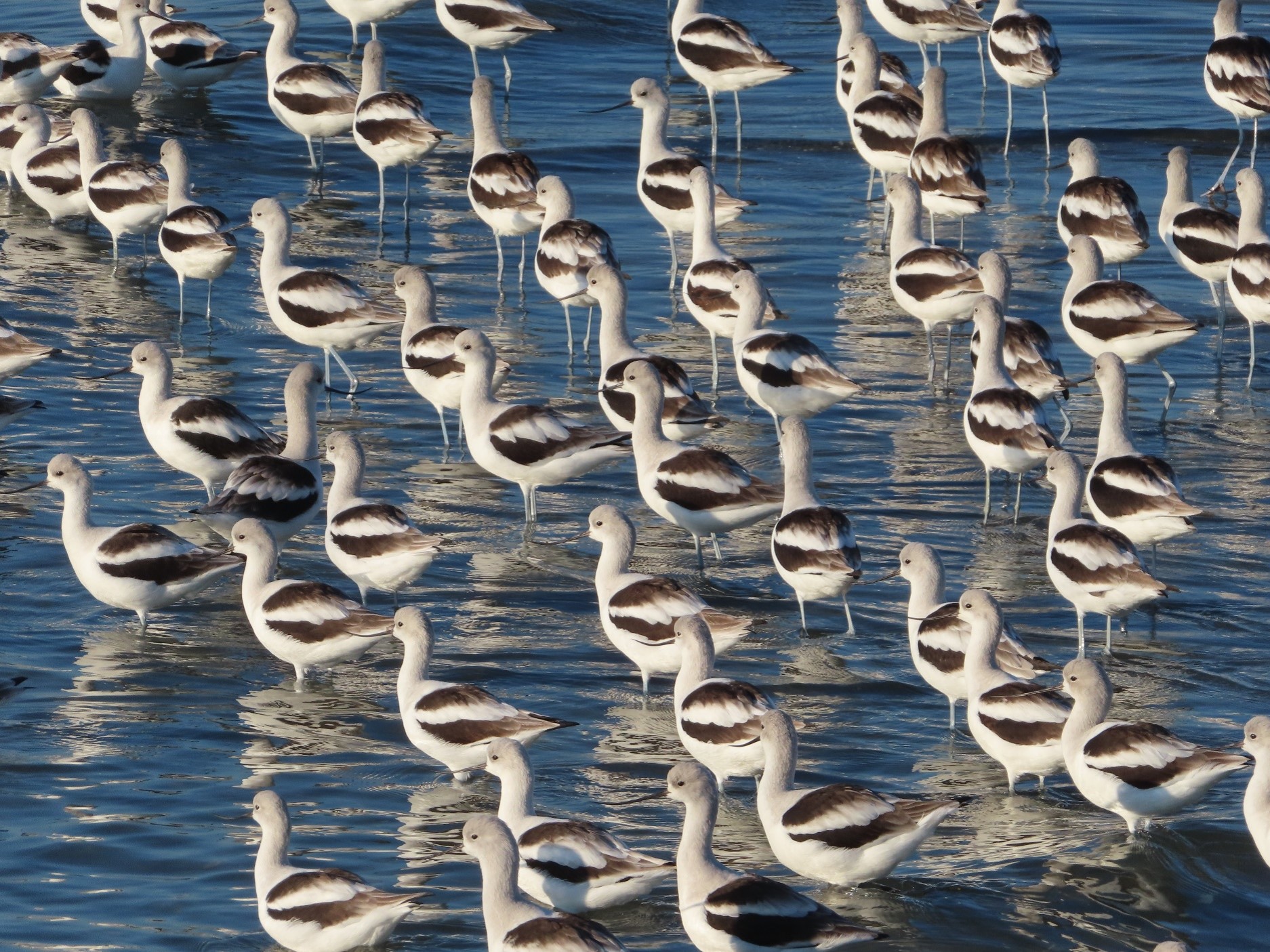



 The results are alarming for our state’s future: an estimated four to five feet of sea level rise and loss of one to two-thirds of Southern California beaches by 2100, a 50 percent increase in wildfires over 25,000 acres, stronger and longer heat waves, and infrastructure like airports, wastewater treatment plants, rail and roadways increasingly likely to suffer flooding.
The results are alarming for our state’s future: an estimated four to five feet of sea level rise and loss of one to two-thirds of Southern California beaches by 2100, a 50 percent increase in wildfires over 25,000 acres, stronger and longer heat waves, and infrastructure like airports, wastewater treatment plants, rail and roadways increasingly likely to suffer flooding.